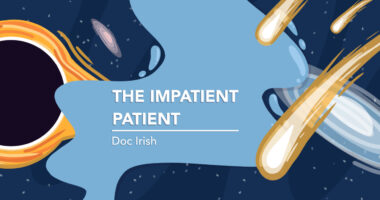I’m grateful for Parkinson’s treatments that help me feel good
While I wish for a cure, I'm still thankful for symptom relief

Parkinson’s disease is not only degenerative but incurable, which means it gets worse, to some degree, every day. While we still don’t have any proven disease-modifying treatments — those that will actually stop, reverse, and cure Parkinson’s — advances in technology have helped to control symptoms. And as I’ve often said, when it comes to Parkinson’s disease, for me, feeling good is as good as being good.
What I mean is that, while I hope and pray every day for a magical pill or therapy that will prevent and reverse Parkinson’s disease, in the meantime, I’m happy for any treatment that gives me significant relief from symptoms. The symptoms of Parkinson’s can be so frustrating and challenging to deal with, and often, treating one symptom can lead to other troubling side effects.
The trade-off
For example, I take Sinemet (carbidopa/levodopa) every day to control the tremors that come with Parkinson’s disease. But if I get too much of it in my system, I get dyskinesia, or uncontrollable movements and spasms in my arms, legs, hands, and neck. These can be as problematic as the tremors. Many Parkinson’s patients with dyskinesia sort of have a “rocking and rolling” look about them, like they are moving their heads and hands to a silent disco. To those unfamiliar with the disease, this looks like a symptom of Parkinson’s, when really, it’s a side effect of treating it.
This is the kind of trade-off Parkinson’s patients have to make all the time. Which can I tolerate to get through my day: the symptom or the side effect?
Fortunately for me, in 2019, I had deep brain stimulation (DBS) surgery, which allows a pacemaker-like device to send an electric signal to my brain that has made all of my symptoms much easier to handle, with minimal side effects. In my case, it has been a life-altering change for the good, allowing me to continue to work, socialize, and basically live my life with far fewer medications and complications. It is not a cure, but DBS has made me feel as close to “normal” as I have since being diagnosed in 2013.
This treatment helped me even more after the U.S. Food and Drug Administration approved adaptive DBS (aDBS) earlier this year. This new “software” lets your DBS system sense brain activity and automatically adjust the stimulation level of your system, all without any effort from the patient. aDBS was turned on for me in June, and it has helped even out the peaks and valleys of my disease even more.
It’s not wholly without side effects, though. One odd thing I’ve noticed in the four or so months since the aDBS was turned on is that I’ve had fewer off periods in the afternoon, when I often experienced energy dips. However, from almost exactly 10 a.m. to 11 a.m., I experience significant slowness and rigidity. Medication doesn’t seem to help, and it only lasts about an hour. It’s manageable, but so thoroughly odd. The technology is amazing, but it is still subject to the brain’s whims.
In this never-ending battle with Parkinson’s disease, I do hope for and keep working toward a cure. But in the meantime, every day I feel good with treatments that relieve my symptoms is a good day.
Note: Parkinson’s News Today is strictly a news and information website about the disease. It does not provide medical advice, diagnosis, or treatment. This content is not intended to be a substitute for professional medical advice, diagnosis, or treatment. Always seek the advice of your physician or another qualified health provider with any questions you may have regarding a medical condition. Never disregard professional medical advice or delay in seeking it because of something you have read on this website. The opinions expressed in this column are not those of Parkinson’s News Today or its parent company, Bionews, and are intended to spark discussion about issues pertaining to Parkinson’s disease.








Leave a comment
Fill in the required fields to post. Your email address will not be published.